We may earn revenue from the products available on this page and participate in affiliate programs. Learn more ›
Published Sep 29, 2023 2:55 PM
If you’ve ever attended a WOD (short for Workout of the Day in CrossFit parlance), you know the right CrossFit shoes can make a huge difference in your performance. Of all the many, many CrossFit accessories you can purchase to improve your training, few have the same kind of impact as your shoe choice. But, CrossFit is a varied discipline with several distinct aspects. In this list, we’ll break down the best CrossFit shoes for cross-training, Olympic lifting, and even recovery.
Best overall: Nobull Gum Trainer+
Best budget: Nike Metcon 8
Best for beginning lifters: Reebok Lifter PR II
Best for advanced lifters: Nike Romaleos 4 SE
Best for recovery: Hoka Ora Recovery Slide
How we chose the best CrossFit shoes
I have been a part of my local CrossFit community since 2009, during which time I’ve tried just about every shoe meant for the mats. You can even see a very embarrassing picture of me online from the Reebok CrossFit launch event way back in 2012. For this article, I relied on personal experience, editorial reviews, spec comparisons, and advice from several high-level CrossFit competitors who can’t be named here due to their sponsorship status. While CrossFit-oriented shoes are never cheap, I have focused on pairs that are durable enough to last for years while providing the comfort and performance required to keep you ringing up PRs.
The best CrossFit shoes: Reviews & Recommendations
While we make specific recommendations about individual products, you’re always best off checking out all the options before purchasing. There’s lots of product overlap, so know your options before you pay.
Best overall: Nobull Gum Trainer+
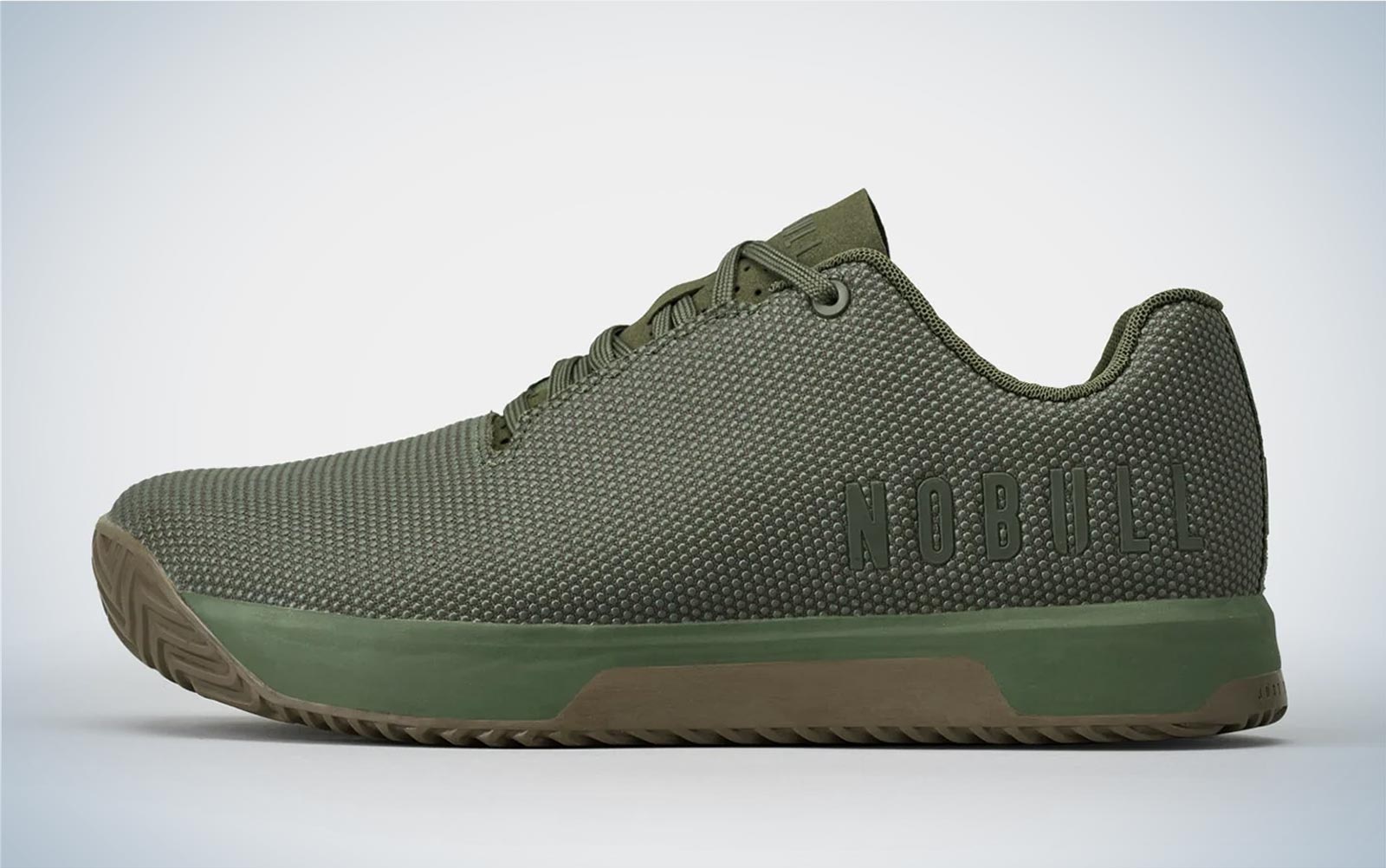
Specs
Sizes: Men’s 8-16 and Women’s 5-11
Best for: All-around shoe suitable for weightlifting and metabolic conditioning
Pros
No seams to rub and cause blisters
Very comfortable
Subtle heel rise
Rubber reinforcement makes them very durable
Wide toe box for stability
Cons
Toe box may actually feel too wide for some
Women’s sizes cap at 11
Nobull burst onto the CrossFit scene just a few years ago, and now the company is the title sponsor for the annual CrossFit Games. The Nobull shoes are easily recognizable thanks to their seamless design, which makes them cool to look at but also reduces the risk of blisters from bunched fabric. CrossFit requires a lot of unusual movements in every direction, and one bad seam inside of a shoe can cause havoc.
Heavy-duty rubber reinforces areas that take a lot of abuse. The toe caps are burly, so repeated burpees won’t tear them apart. The bottom is thick and sturdy, so it won’t flex when you don’t want it to. Plus, the wide toe cage and reinforced sole provide a very stable platform for heavy lifts and intense dynamic movements. Despite their rugged build, they’re still relatively light and extremely breathable.
These shoes were specifically built for the rigors of a CrossFit gym, and it shows.
Best budget: Nike Metcon 8
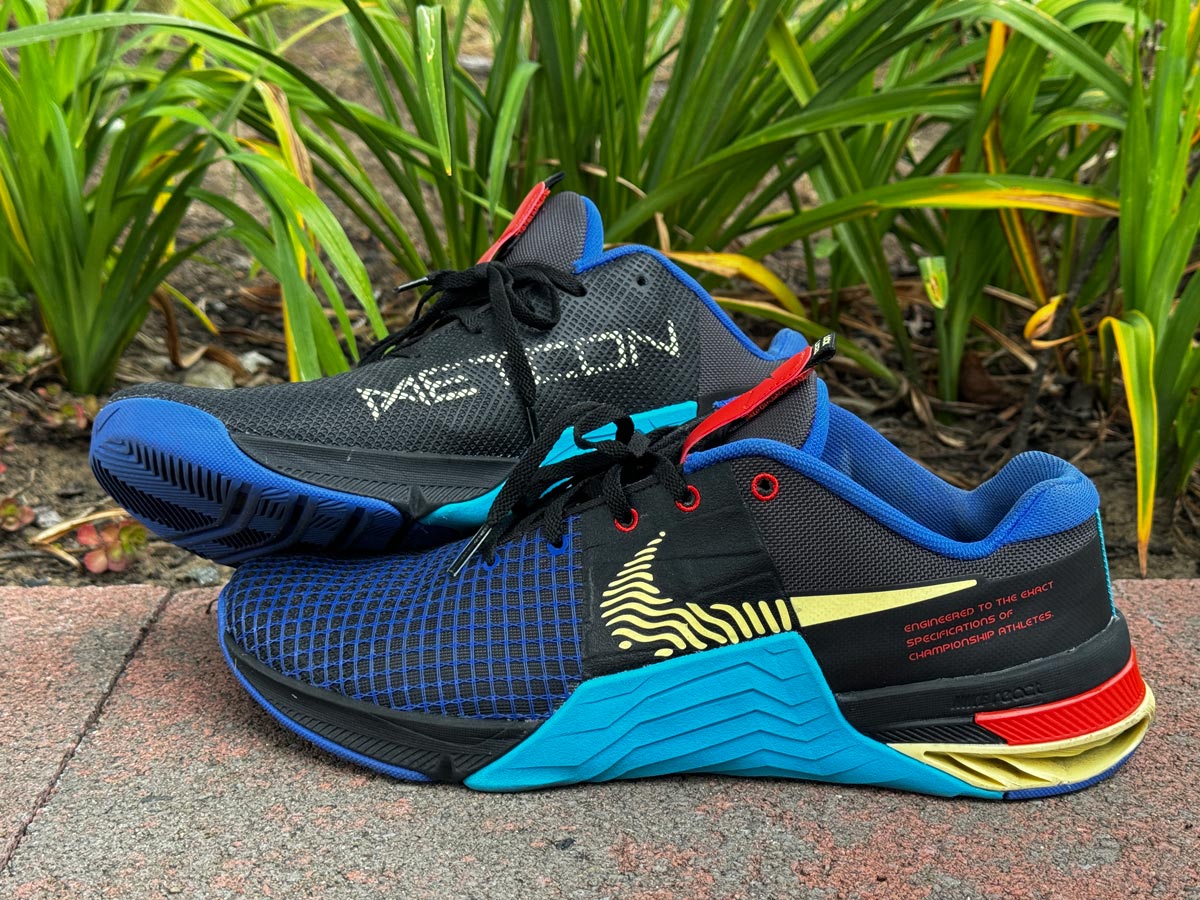
Specs
Sizes: Women’s 5-12 and Men’s 6-15
Best for: All-around shoe for lifting and conditioning
Pros
Very wide size range in both men’s and women’s
Attractive design with lots of colors
Affordable because they’re usually on-sale
Sturdy sole provides a very solid platform
Breathable
Cons
Toe box isn’t as wide as some others
You’ll notice that the Metcon 9 is already on the market, which may make the 8 seem like a weird recommendation. But, if you don’t need the absolute latest model, you can save quite a bit of cash and still get a great shoe.
The Nike Metcon 8 (“Meton” is CrossFit speak for “metabolic conditioning”) offers a flat, sturdy bottom with four degrees of heel rise. That makes them much more stable than running shoes when it comes to dynamic movements and heavy lifts. They’re naturally a bit more narrow than the Nobulls, but they break in very nicely. They’re reinforced with sturdy rubber at points that naturally take a lot of abuse. There’s even a large rubber area on the outside midsole of the shoe to prevent rope climbs from tearing up your kicks.
While the Nobulls opt for a very no-nonsense design, the Nikes are much flashier, which I personally appreciate. There are lots of colorways to choose from.
The toe box is wide but not massive, so you might have to spend a little time breaking these in before they feel just right. Once you’ve gotten a couple of workouts in, though, they’re excellent.
Best for beginning lifters: Reebok Lifter PR II
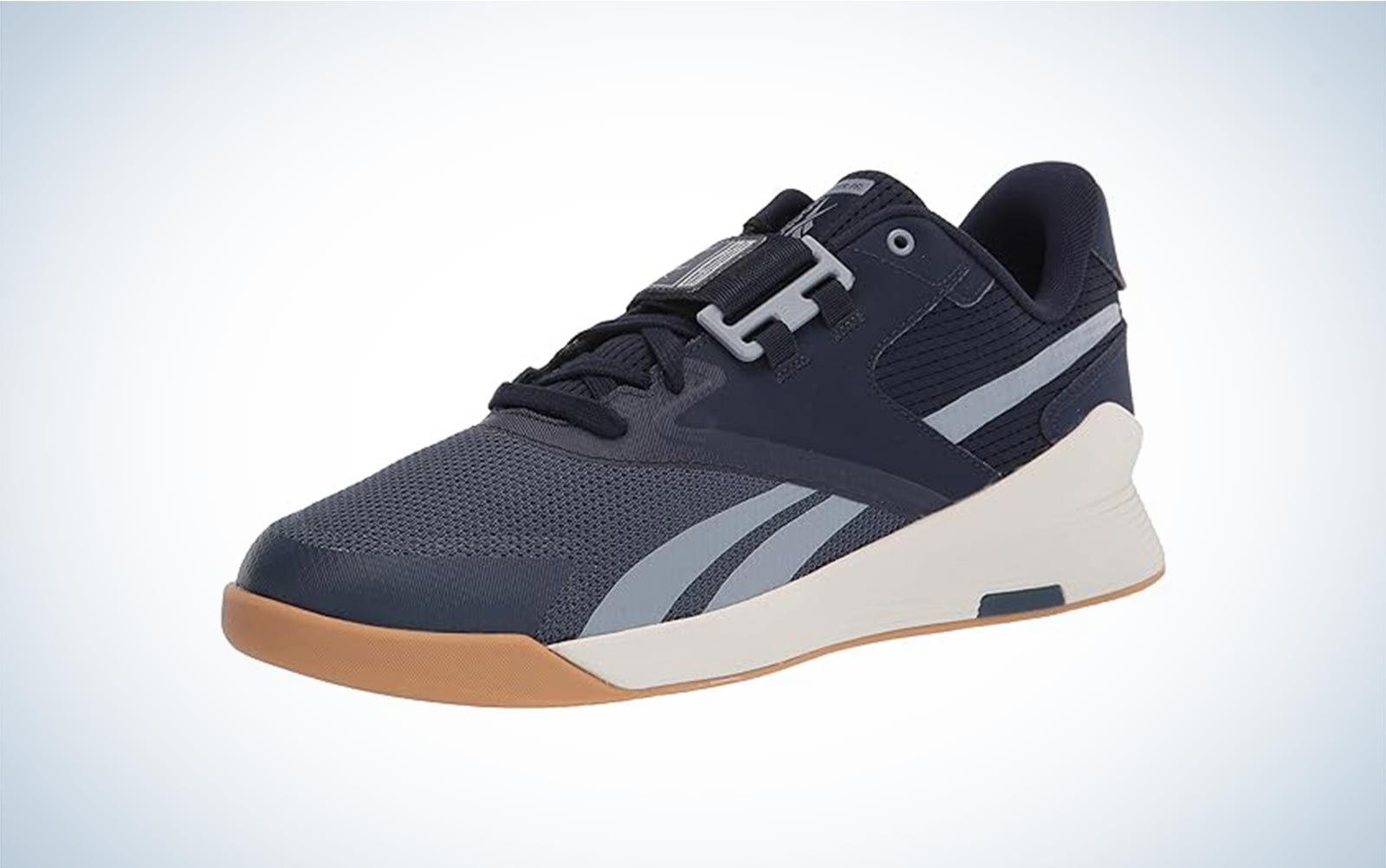
Specs
Sizes: Men’s 6-14 (men and women can wear the same style)
Best for: Weightlifting
Pros
Affordable compared to other dedicated lifters
Relatively light
Lots of size options
Easy to put on
Stable
Cons
Not as durable as more expensive models
Once you start lifting seriously, a solid pair of weight-lifting shoes can make a huge difference in your form and the overall feel of your lifts. You’ll notice that pro lifters typically wear wedge-shaped shoes with a raised heel that puts their legs (and by extension, their entire body) into a better position. These beginner-oriented lifters do just that with a wedge-shaped sole that slightly raises the heel. This is useful for backsquatting, Olympic lifting, and other activities with heavy weights.
A sturdy velcro strap goes across the laces to add an extra layer for stability during the high-torque process that is weight-lifting. If you’re just starting out, these will likely provide all the stability you need. Plus, they’re durable enough to last for years of training before you move up to something more advanced.
Best for advanced lifters: Nike Romaleos 4 SE
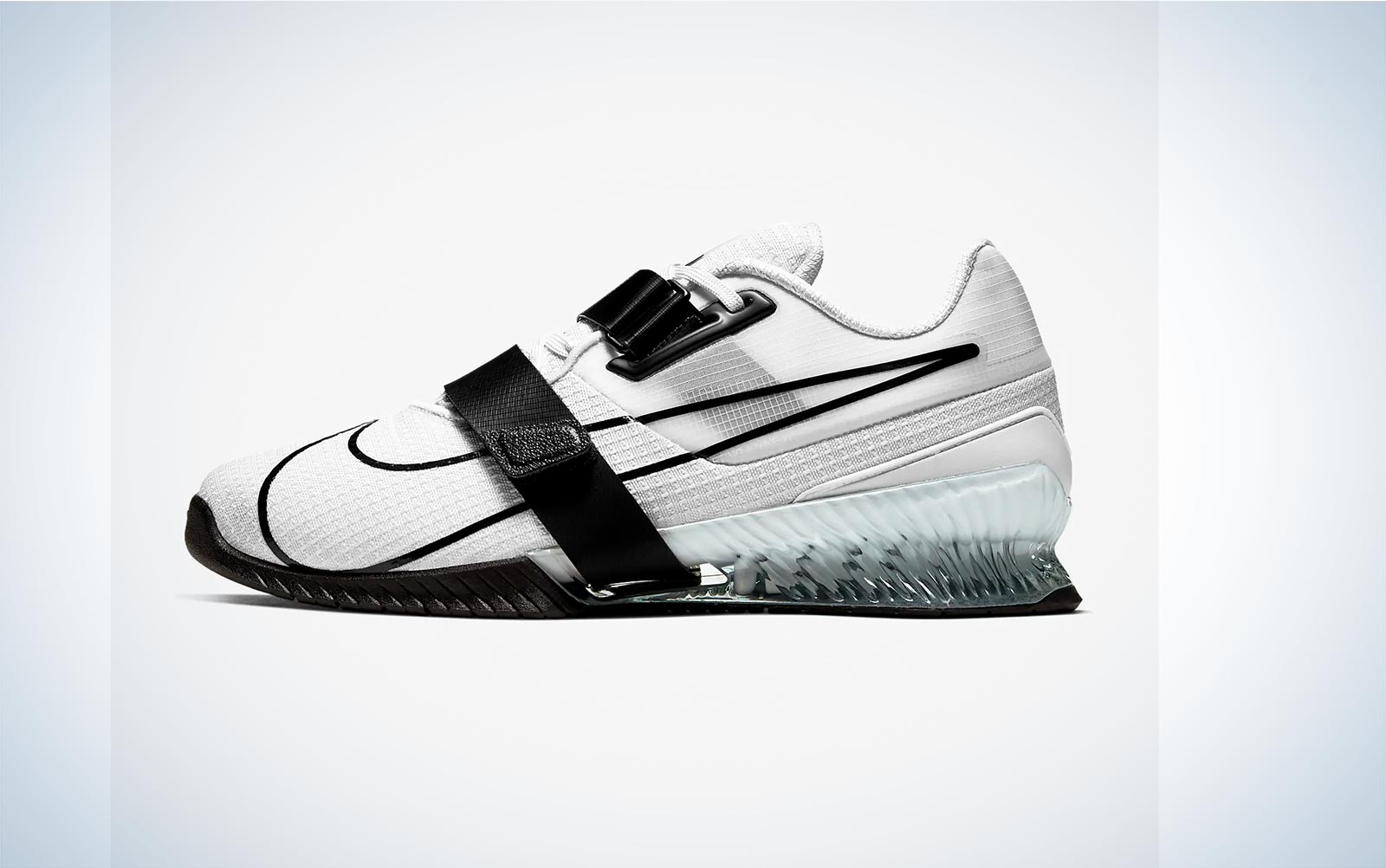
Specs
Sizes: Men’s 3.5-15 (unisex)
Best for: Serious weight lifting
Pros
Heel rise provides a comfortable lifting position
Extremely sturdy
Very stable even under heavy load
Cool colorways
Easy to put on
Cons
Some reviewers complain about the durability of the Velcro strap
Once you’re ready to move on to a more advanced (and more expensive) lifter, this is a great option. The hard, flat bottom provides a very stable base and a satisfying slap against the gym floor during Olympic lifts. The raised heel puts your body in an ideal position for a deep squat without taxing your Achilles and other vulnerable tendons. The leather upper is very sturdy to handle the rotational forces involved with heavy lifts. Plus, a pair of Velcro straps go over the laces in order to keep everything cinched up tightly. These are pro-grade lifting shoes for moving serious weight.
Best for recovery: Hoka Ora Recovery Slide
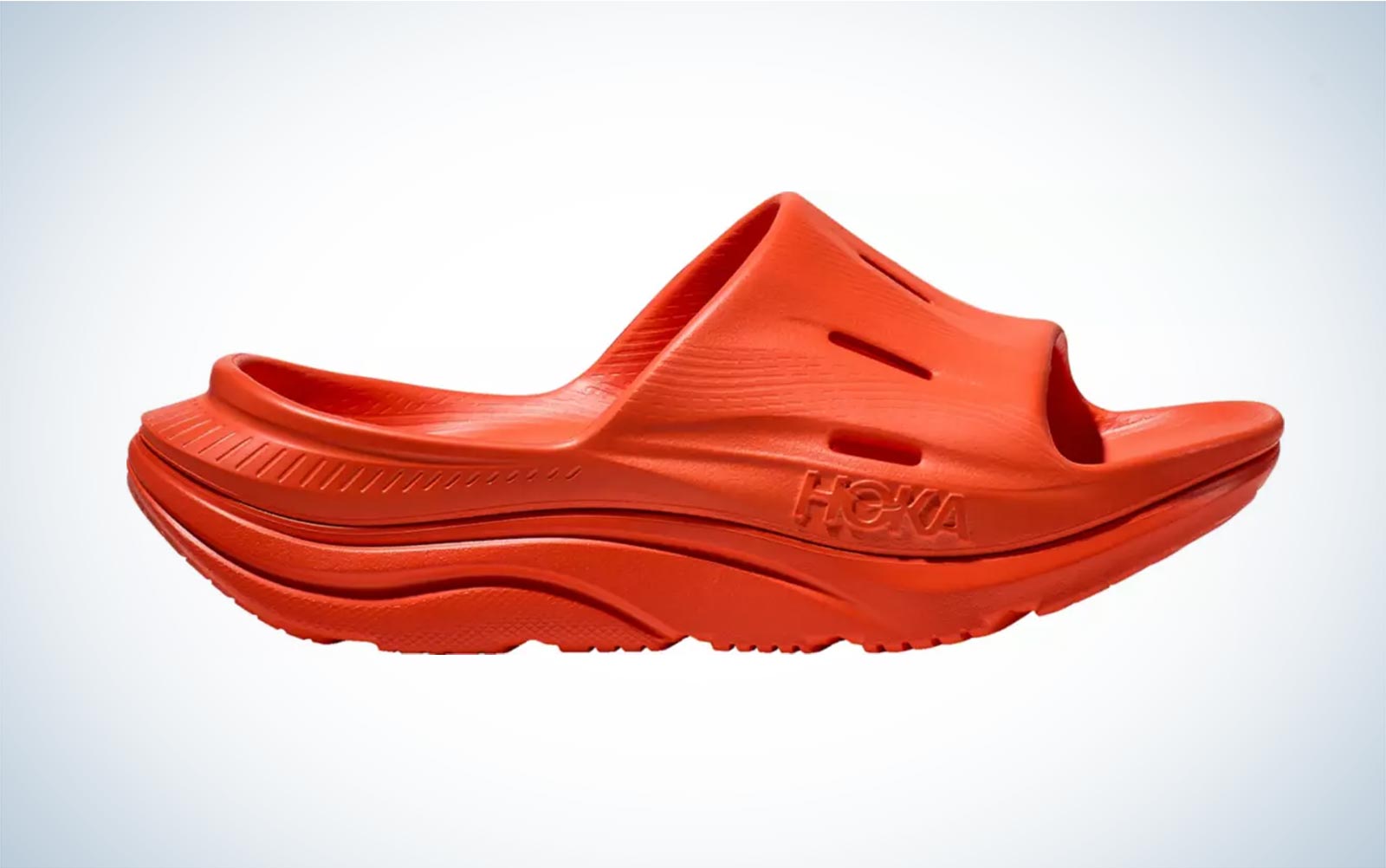
Specs
Sizes: Men’s 4-14 (unisex)
Best for: Wearing after a workout
Pros
Specifically shaped to support the foot, unlike regular sandals
Air channels to keep cool
Two-stage material to refine squish under your foot
Lots of colorways
Cons
Most colorways are very bright, which may not be your style
Recovery is crucial for your entire body. But, feet take an especially hard beating. Just about any good trainer will tell you that the average sandal or flip-flop is like a foot torture device. Hoka designed these slides with recovery in mind. They have a two-stage design, which provides the right balance of squishy padding and stable support. The shape of the slide cradles your foot in an active position rather than flattening it out and stressing the delicate parts inside. They’re super-light, ventilated for airflow, and cool-looking as long as you can pull off the bright color vibes. You could get some to match your workout headphones.
Here are some variables and terms to understand when shopping for the best CrossFit shoes.
Style
Most serious CrossFitters have a pair of shoes they use for metabolic conditioning workouts and then another pair of shoes meant specifically for weight lifting. If you’re just starting out, you probably don’t need a dedicated set of lifters. A simple pair of training shoes from this list can do everything you need. Once you start getting to heavier lifts, however, a good pair of lifting shoes will pay off in the long run. Plus, since you only wear them a few hours a week, they should last a long time.
Heel drop
Running shoes are not good for CrossFit. They typically have too much padding, which makes them unstable during lateral movements and under heavy weights. Plus, they typically have more than 10mm of drop from the heel to the toe. That elevated heel puts your legs in the incorrect position and can limit your flexibility and mobility down the road. A shoe like the Nobull trainers on this list, for example, only has 4mm of heel drop. You’ll find that most CrossFit shoes hover around that. You want something that’s still relatively comfortable, but that puts your legs in the correct position during a workout.
Fit
Most CrossFit shoes offer a wide toe box that may feel weird when you’re first getting used to it. You need a wide, stable base for dynamic movements (especially when you’re moving laterally), so CrossFit shoes skew much wider than running shoes or casual footwear. Even with that wide toe box, however, you want to ensure you tie them very tightly. You don’t want your foot wiggling around while you work out. That’s a surefire ticket to Blister City.
FAQs
Q: Are CrossFit shoes worth it?
If you’re going to be working out regularly, you’ll want the right shoes. Typical running shoes offer too much padding and heel drop, which is bad for stability and flexibility. That might be fine when you’re just starting out, but once you start moving serious weight, things can get very dicey. Eventually, you’ll likely want a pair of trainers and a pair of lifters.
Q: Are running shoes OK for CrossFit?
When you run, your heel typically strikes the ground with the whole weight of your body. As a result, running shoes really stack the padding around that area to cushion the blow. During CrossFit, however, that happens somewhat infrequently and that padding becomes a liability. A higher heel pushes your ankle up and shortens your tendons, limiting movement in the long run. Also, that squishy foam doesn’t provide a solid base under your foot once you start doing torque-based heavy lifts like backsquats. Imagine you’re trying to lift while standing on a big squishy blob instead of a rigid platform. It can go badly.
Q: How long do shoes last for CrossFit?
There are a lot of variables here. You can burn through a pair in six months if you work out five times per week doing outdoor exercise and otherwise punishing your shoes. If you mostly work out in the gym and take care of them, they can last for years. Lifters tend to last longer because they’re made from tough material and don’t get as much use.
Q: Can you do CrossFit without shoes?
First, you’ll need to get your gym to allow it. Most won’t for hygiene reasons. Some workouts may lend themselves to barefoot status. Kettlebells, for instance, are fun to do with no shoes on. You’ll want to wear shoes for things like back squats or Olympic weight-lifting because you need the grip. Done correctly, those will put a ton of rotational force on your feet, and you want as much grip as possible. Your best bet is to get a pair of shoes that fit nicely, and then you won’t be so eager to ditch them and let the dogs out.
Final thoughts on the best CrossFit shoes
Best overall: Nobull Gum Trainer+
Best budget: Nike Metcon 8
Best for beginning lifters: Reebok Lifter PR II
Best for advanced lifters: Nike Romaleos 4 SE
Best for recovery: Hoka Ora Recovery Slide
Whether you’re just starting out or have been around since the early days, the right CrossFit shoes can make a huge difference in how you train. You want stability, versatility, and durability. Plus, you want them to look cool, so when you post your daily Instagram story from the gym, you look the part.
Why trust us
Popular Science started writing about technology more than 150 years ago. There was no such thing as “gadget writing” when we published our first issue in 1872, but if there was, our mission to demystify the world of innovation for everyday readers means we would have been all over it. Here in the present, PopSci is fully committed to helping readers navigate the increasingly intimidating array of devices on the market right now.
Our writers and editors have combined decades of experience covering and reviewing consumer electronics. We each have our own obsessive specialties—from high-end audio to video games to cameras and beyond—but when we’re reviewing devices outside of our immediate wheelhouses, we do our best to seek out trustworthy voices and opinions to help guide people to the very best recommendations. We know we don’t know everything, but we’re excited to live through the analysis paralysis that internet shopping can spur so readers don’t have to.
>>> Read full article>>>
Copyright for syndicated content belongs to the linked Source : Popular Science – https://www.popsci.com/gear/best-crossfit-shoes/































